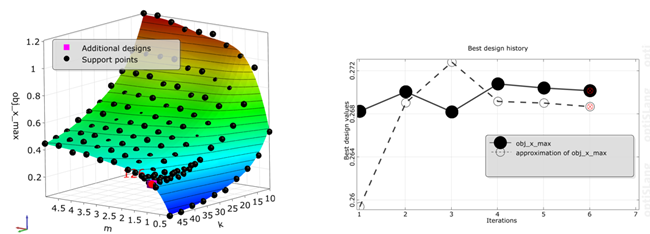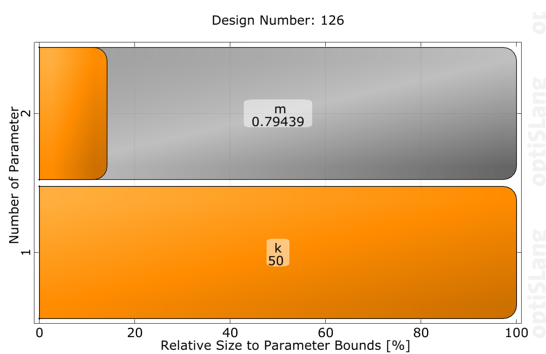This tutorial allows you to complete an optimization of a single degree-of-freedom system excited with initial kinetic energy.
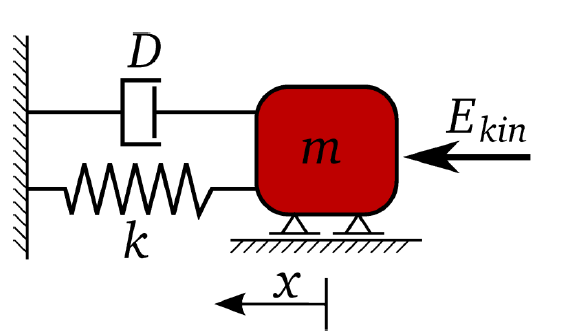
The equation of motion of free vibration is:
The un-damped and damped eigen-frequency is
The time-dependent displacement function is:
In this tutorial, you complete the optimization using the optiSLang extension in Workbench.
The optimization goal is to minimize maximum amplitude after five seconds of free vibration.

The restricted damped eigen-frequency as the optimization constraint is:
The mass and stiffness as optimization variables, damping ratio and kinetic energy as the constant is:
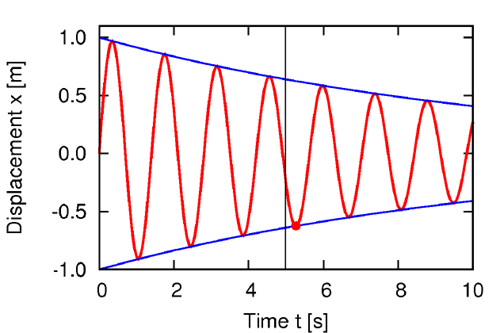
This tutorial demonstrates how to do the following:
Define the parameter properties
Perform a sensitivity analysis with respect to mass and stiffness using the global bounds

Perform a single objective and constrained optimization by minimizing the maximum amplitude
Perform an optimization using the Metamodel of Optimal Prognosis (MOP)
Perform an optimization using the Adaptive Metamodel of Optimal Prognosis (AMOP)
Before you start the tutorial, download the oscillator_optimization_calibration_workbench zip file from here , and extract it to your working directory.
If you do not see an optiSLang section in the Workbench Toolbox, ensure that the Ansys Workbench optiSLang Extension is installed and activated.
To set up and run the tutorial, perform the following steps:
- Opening the Workbench Project
- Completing the Sensitivity Wizard
- Running the Sensitivity Analysis
- Viewing the Sensitivity Analysis Results
- Completing the Optimization Wizard using the MOP
- Updating the Project and Viewing Optimization Results
- Adjusting the Optimization
- Completing the Optimization Wizard using the Adaptive MOP
- Configuring AMOP Settings
- Updating the Project and Viewing AMOP Postprocessing
Start Workbench.
From the menu bar, select > .
Browse to the oscillator_optimization_calibration_workbench folder and select one of the following options:
oscillator_excel.wbpz
Select this option to use Microsoft Excel as the solver. This tutorial will be using this project file.
oscillator_apdl.wbpz
Select this option to use Mechanical APDL as the solver.
Click .
To save the archive file as a Workbench project file, click .
To start a new sensitivity analysis, in the Workbench Toolbox, double-click the Sensitivity system.

In row 4 (m), change the lower bound to
0.1and the upper bound to5.In row 3 (k), change the lower bound to
10and the upper bound to50.In rows 1 and 2 (D and Ekin), select the Constant check box.
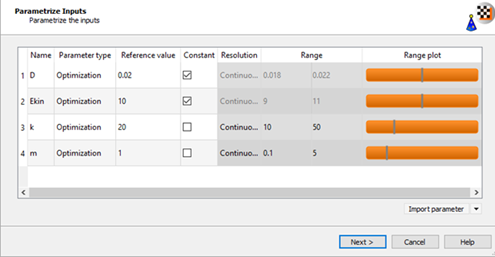
Click .
To define x_max as a minimization objective, drag the row from the Responses table to the Objective Minimize icon and let it drop.
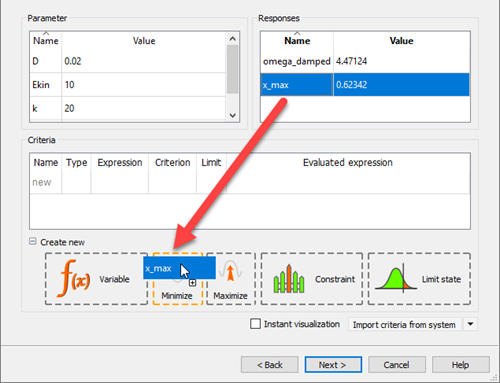
The new criterion is displayed in the Criteria table.

To define omega_damped as a constraint, drag the row from the Responses table to the Constraint Less icon and let it drop.

In the Limit field, enter
8.
Click .
Select the Full factorial sampling method and leave the number of samples at 100.
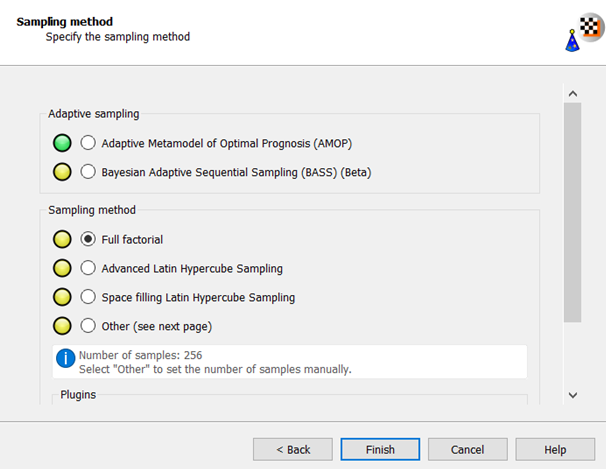
Click .
To save the current project, from the menu bar, select > or from the main toolbar, click
.
Right-click the Results cell of the Sensitivity system and select from the context menu.

The DOE is created in the background and all designs are calculated.
The Progress pane displays the status of the update and a progress bar.

Finally, the MOP is generated.
To open the sensitivity analysis results, double-click the Results cell.
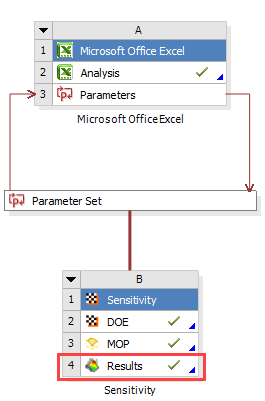
The results of the sensitivity analysis are displayed. You can observe:
The approximation quality is excellent for both responses
The influence of the inputs is contrariwise
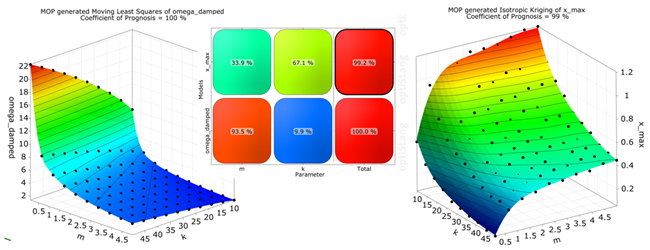
Drag the Optimization wizard from the Toolbar and drop it onto the MOP cell of the Sensitivity system.
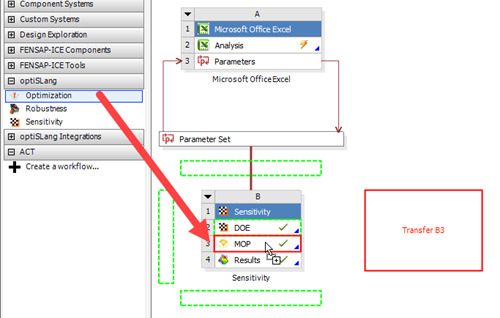
Do not adjust the values in the Parametrize Inputs table.
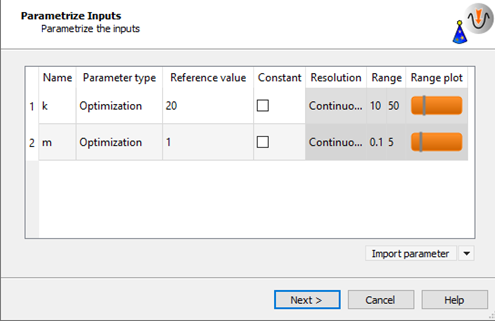
Click .
Do not adjust or add to the currently displayed values for parameters, responses, and criteria.
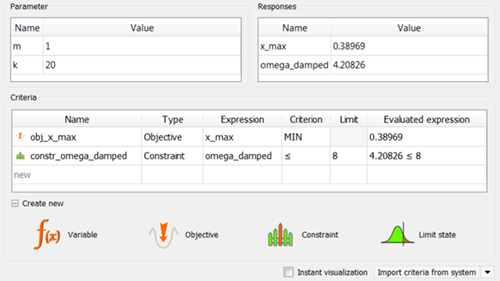
Click .
Click .
Do not adjust the current optimization method settings.
The gradient based NLPQL is recommended.
Click .
An NLPQL system is added to the Project Schematic.
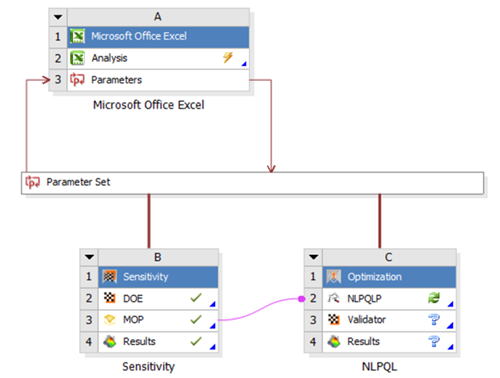
To save the current project, from the menu bar, select > or from the main toolbar, click
.
Right-click the Results cell of the Optimization system and select from the context menu.
The optimizer optimizer converges within a few iterations. The response, objective, and constraints of the best design are verified. Due to local approximation errors, the constraints of the best design may be violated in the validation solver run. Validation of the best design is is very important for the optimization on the MOP.
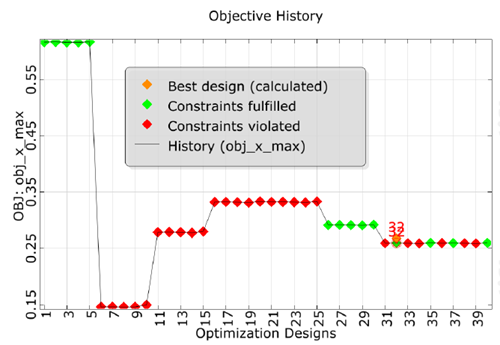

If the validation is not satisfactory (for example, a large discrepancy or a violated constraint), use the following alternative strategies:
Change the constraint to provide a safety margin.
Append a local re-optimization with a direct solver call, using the best design on MOP as the starting design. The best design can be passed automatically to the new optimization system. However, we do not recommend using an infeasible start design.
Improve the metamodel locally by adding a validated best design to the sensitivity design of experiments and build a new metamodel, then repeat the optimization.
Drag the Optimization wizard from the Toolbar and drop it onto the DOE cell of the Sensitivity system.
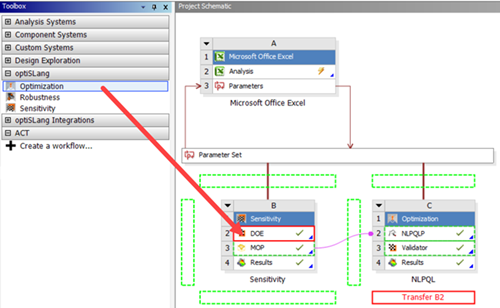
Do not adjust the values in the Parametrize Inputs table.
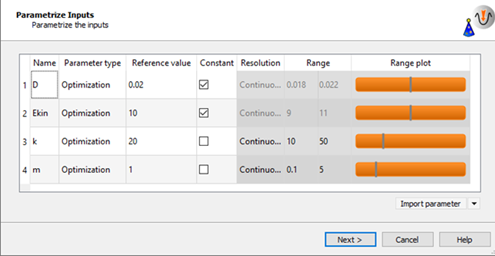
Click .
Do not adjust or add to the currently displayed values for parameters, responses, and criteria.
Click .
Click .
Do not adjust the current optimization method settings.

The Adaptive Metamodel of Optimal Prognosis is recommended. All designs of the sensitivity system are used as start designs.
Click .
An AMOP system is added to the Project Schematic.

Double-click the AMOP cell of the AMOP system to open the settings.
On the Adaption tab, select the Show advanced settings check box.
In the Maximum number of samples field, enter
45.Adjust the refinement sliders so the first two are at 0% and the Importance of optimization criteria slider is at 100%

To save and close the settings, click .
To save the current project, from the menu bar, select > or from the main toolbar, click
.
Right-click the Results cell of the AMOP system and select from the context menu.
The AMOP postprocessing is displayed. You can observe:
The AMOP with criteria refinement converges in a few iteration steps to the global optimum
Validation of best design is performed in every iteration
The history plot compares best design approximation and validation
